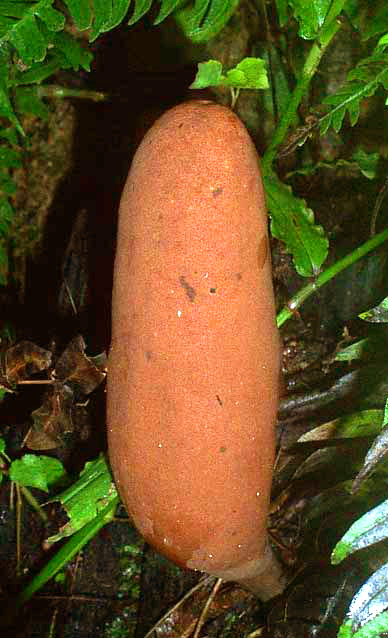Excerpts from Jim Conrad's
Naturalist Newsletter
from the August 17, 2007 Newsletter issued from Sierra Gorda Biosphere Reserve, QUERÉTARO, MÉXICO
A CORDYCEPS MUSHROOM?
Well into the rainy season, it's a mushroomer's dream. Right beside the spring shown above, deep within dewy shadows beneath overarching fern fronds, Paul noticed the weird, eight-inch high, fungus fruiting body shown below:

I'd seen mushrooms of that general shape but never of that shape, size and woody texture. Therefore I shipped the picture off to noted mycologist Tom Volk at the University of Wisconsin. He wasn't sure what it was but guessed that it was a member of the genus CORDYCEPS. He couldn't be sure without looking at its tissue beneath a microscope.
I really want to believe that it's a Cordyceps because Cordyceps is a fantastic fungus. Most Cordyceps species are parasitic on underground insects, especially grubs. Maybe if I'd yanked on the fungus shown above I'd have found it "rooted" in a big grub, whose nutrients it was slowly absorbing.
Tom has a special fondness for this genus, for he owes his life to it. It happens that the asexual state of another Cordyceps species produces the immunosuppressant drug called Cyclosporin. Cyclosporin prevents the body from rejecting foreign tissue, and that's exactly what Tom needed in 2006 when he was implanted with a new heart.
Of course it doesn't automatically follow that the fruiting body shown in the above photo is medicinal in any way, but if I were to choose an organism to research for its medicinal value I don't think I could do better than to examine this one.